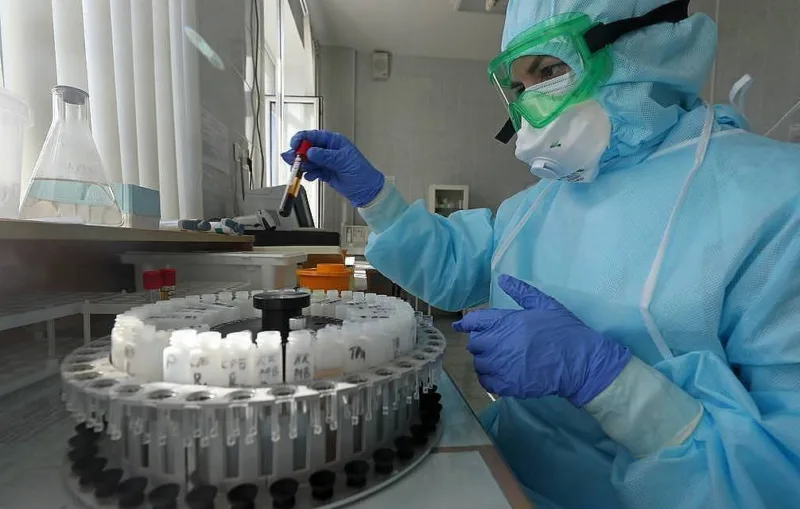Pfizer and partner BioNTech said Monday that their vaccine against Covid-19 was strongly effective, exceeding expectations with results that are likely to be met with cautious excitement — and relief — in the face of the global pandemic.
The vaccine is the first to be tested in the United States to generate late-stage data. The companies said an early analysis of the results showed that individuals who received two injections of the vaccine three weeks apart experienced more than 90% fewer cases of symptomatic Covid-19 than those who received a placebo. For months, researchers have cautioned that a vaccine that might only be 60% or 70% effective.
The Phase 3 study is ongoing and additional data could affect results.
In keeping with guidance from the Food and Drug Administration, the companies will not file for an emergency use authorization to distribute the vaccine until they reach another milestone: when half of the patients in their study have been observed for any safety issues for at least two months following their second dose. Pfizer expects to cross that threshold in the third week of November.
“I’ve been in vaccine development for 35 years,” William Gruber, Pfizer’s senior vice president of vaccine clinical research and development, told STAT. “I’ve seen some really good things. This is extraordinary.” He later added: “This really bodes well for us being able to get a handle on the epidemic and get us out of this situation.”
Although it is a bright spot in the battle against the pandemic and a triumph for Pfizer and BioNTech, a German company, key information about the vaccine is not yet available. There is no information yet on whether the vaccine prevents severe cases, the type that can cause hospitalization and death.
Nor is there any information yet on whether it prevents people from carrying the virus that causes Covid-19, SARS-CoV-2, without symptoms.
Without more information, it’s too early to start predicting how much of an impact the vaccine could make, said Michael Osterholm, director of the University of Minnesota’s Center for Infectious Diseases Research and Policy.
“I don’t want to dampen any enthusiasm for this vaccine. I just want us to be realistic,” Osterholm said. “For a vaccine to really have maximal impact, it’s going to have to also reduce severe illness and death. And we just don’t know yet.”
Because the vaccine has been studied for only a matter of months, it is impossible to say how long it will protect against infection with the virus. The vaccine does cause side effects, including aches and fevers, according to previously published data. Gruber said that he believed the side effect profile was comparable to standard adult vaccines, but probably worse than Pfizer’s pneumonia vaccine, Prevnar, or a flu shot.
The results have not been peer-reviewed by outside scientists or published in a medical journal, and even Pfizer and BioNTech have been given no other details about how the vaccine performed by the independent monitors overseeing the study.
Initial supplies of the vaccine, if authorized, will be limited. Pfizer says up to 50 million doses could be available globally. by the end of the year, with 1.3 billion available in 2021. There are also expected to be distribution challenges. The vaccine must be stored at super-cold temperatures, which could make it extremely difficult to deliver to many places. Pfizer has said it is confident those issues can be managed.
Although the estimate of the efficacy of the vaccine could change as the study is completed, it is close to a best-case scenario. That also bodes well for other vaccines in the late stages of testing, including those developed by Moderna, AstraZeneca, and Johnson & Johnson.
“If that headline really number really holds up, that is huge. That is much better than I was expecting and it will make a huge difference,” said Ashish Jha, the dean of the School of Public Health at Brown University. He cautioned, however, that it is always difficult to evaluate science via press release and that researchers will need to see the full results. He noted that side effects are something to watch, because even if there are no serious long-term complications, people feeling sick for a day or two could lead some to be hesitant to take a vaccine.
Both Pfizer’s vaccine and Moderna’s use messenger-RNA, or mRNA, technology, which uses genetic material to cause the body to create a protein from the virus; the immune system then recognizes the virus and learns to attack. Other vaccines in the late stages of development use genetically engineered viruses for a similar purpose, or pieces of protein that are directly injected. No mRNA product has ever been approved by regulators.
The story of how the data have been analyzed seems to include no small amount of drama. Pfizer, seeing an opportunity to both help battle a pandemic and demonstrate its research prowess, made decisions that were always likely to make its study the first of a Covid-19 vaccine to produce data — including its decision to have an independent group of researchers, known as a data safety and monitoring board, take an early look at the data in the 44,000-volunteer study before its completion.
The first analysis was to occur after 32 volunteers — both those who received the vaccine and those on placebo — had contracted Covid-19. If fewer than six volunteers in the group who received the vaccine had developed Covid-19, the companies would make an announcement that the vaccine appeared to be effective. The study would continue until at least 164 cases of Covid-19 — individuals with at least one symptom and a positive test result — had been reported.










Join our Channel...